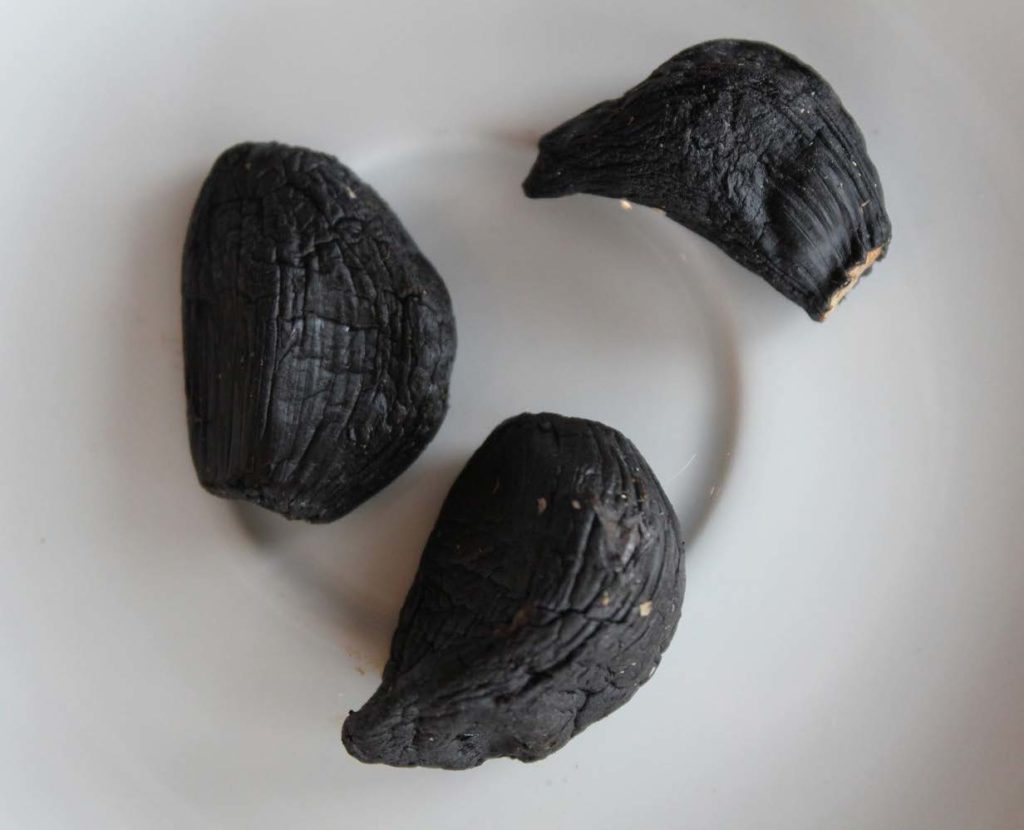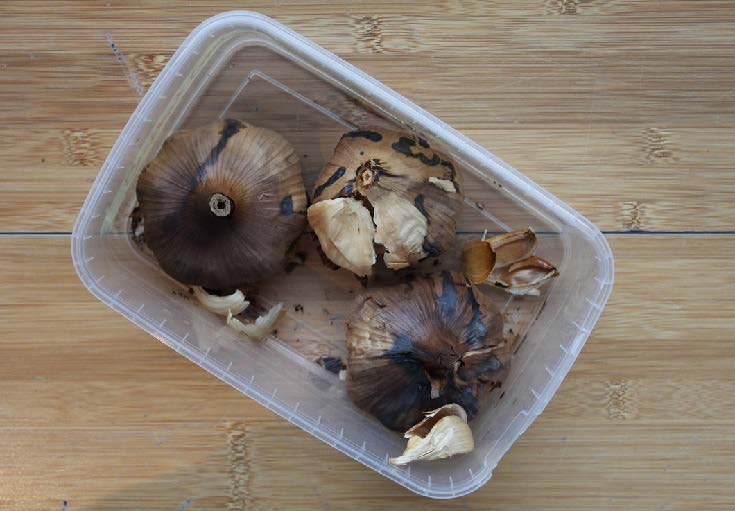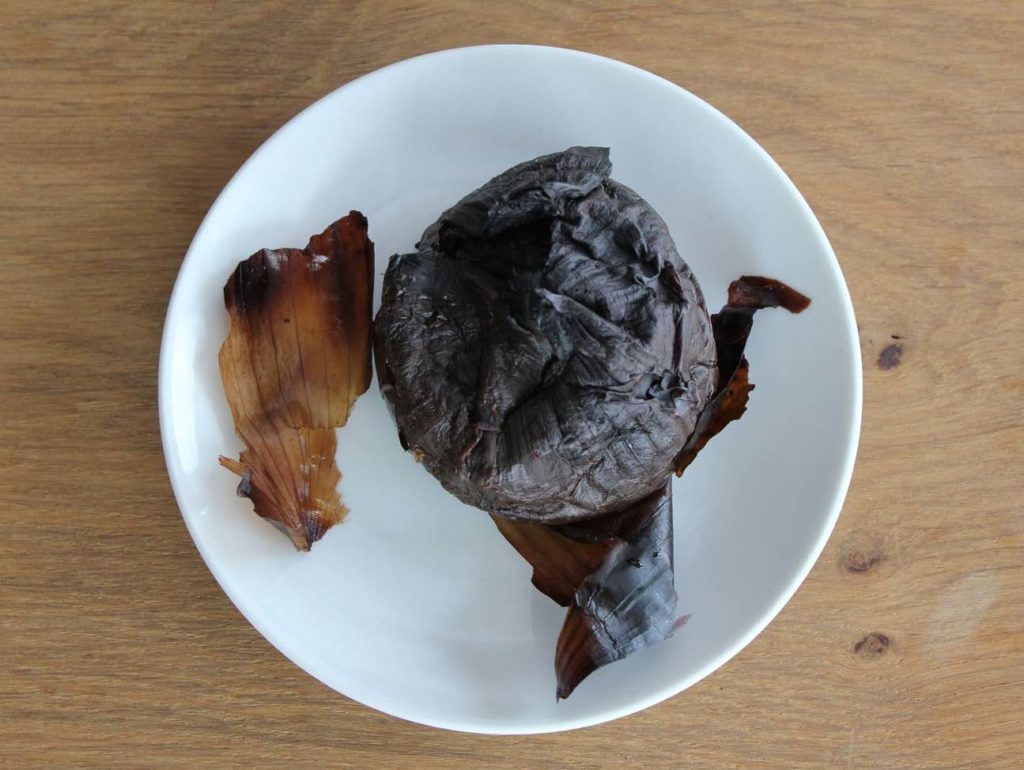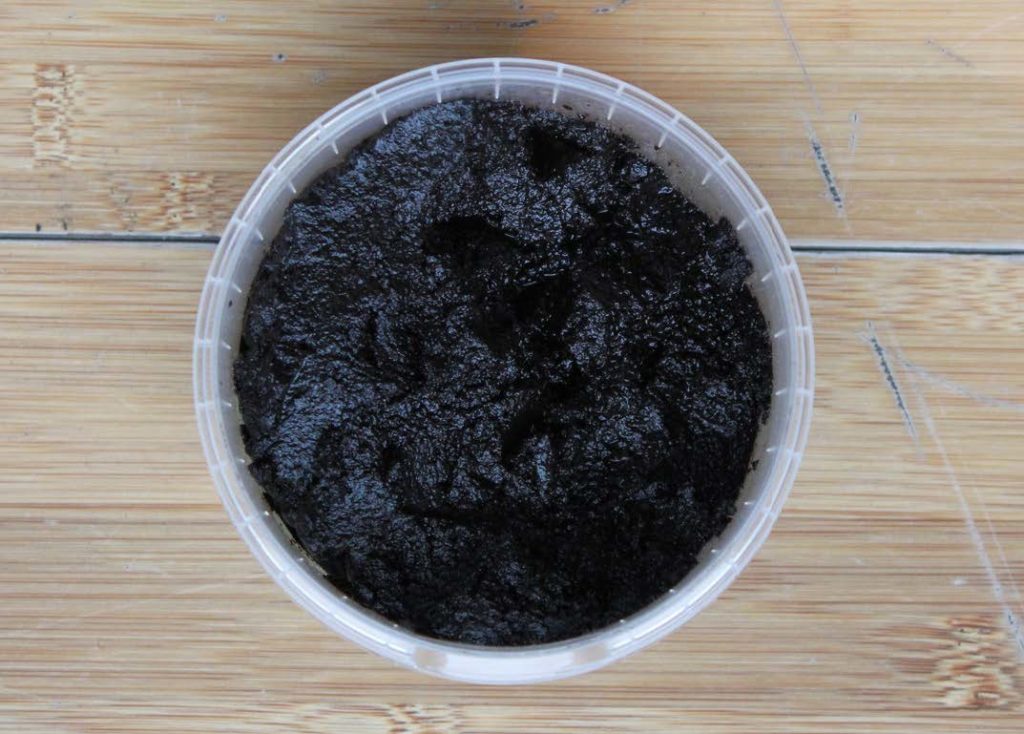
The cloves start hard, raw, pungent, white, then transform completely – soft, bold, and black, aromatic but not aggressive, like a sort of fruit with beautiful round acidity, notes of balsamic vinegar, molasses, liquorice, tamarind.

The basic technique is simple – place whole heads in a sealed container and keep at 60˚c for six weeks. One can keep them in for longer and they will mature further, but may also begin to dry out. What is interesting is that the process is not, strictly speaking, fermentative – the transformation is due not to microbial metabolism but in part to enzymatic breakdown (the heat denatures alliinase, the enzyme that converts non-volatile alliin into volatile allicin, the compound responsible for fresh garlic’s pungency) and in part to the Maillard Reaction, a cascade of chemical reactions that produce the dark colour and complex, carmelised flavour.[i] The sulfurous compounds may also contribute to its anti-microbial properties in its blackened form.
Foods like this invite a larger discussion about the different degrees of ‘fermentation’ as a category. A biochemist might stick to the purest technical definition of the anaerobic conversion of glucose into ethanol and carbon dioxide (C6H12O6 → 2 C2H5OH + 2 CO2), while on the other end of the spectrum, a common understanding of fermentation might also include transformations due solely to chemical and enzymatic activity, even though they look, smell, and taste ‘fermented’ – like black garlic. We and others sit somewhere in the middle, understanding fermentation in the practicable sense as any interaction with microorganisms – bacteria, yeasts, and other fungi – with the purpose of transforming foods.
The principle may be simple, but like any process, the best results lie in obsessing over the details: here, controlling variations in temperature and humidity over time. We are continuing to tweak to discover the best possible product.
In addition to the garlic, we have been experimenting with other alliaceous bulbs. Onions, shallots, it works with them all. Shallots reveal their latent fragrant sweetness; onions intensify into bombs of savouriness; all become tinged with this dark, tart depth.
These larger bulbs work especially well in broths, a particularly effective way to make a rich, full, dark stock. It also works well in broths with umami-bringing ingredients, like dried aged seaweeds and cured aged meats. And it is satisfying and dramatic with any fermented dairy product – creamy and fleshy, lactic and fruity, white and black.
Some of the cloves we dried and ground to a powder, adding them to salad dressings, sauces, and sprinkled on any number of things. The softer ones we passed through a sieve and pulled into a paste.
This one is best slathered on crisp toast with skyr, or on its own by the spoonful.
References
[i] Wang, Danan et al. Black Garlic (Allium sativum) Extracts Enhance the Immune System. Medicinal and Aromatic Plant Science and Biotechnology. 4 (1), 37-40. Global Science Books 2010.


